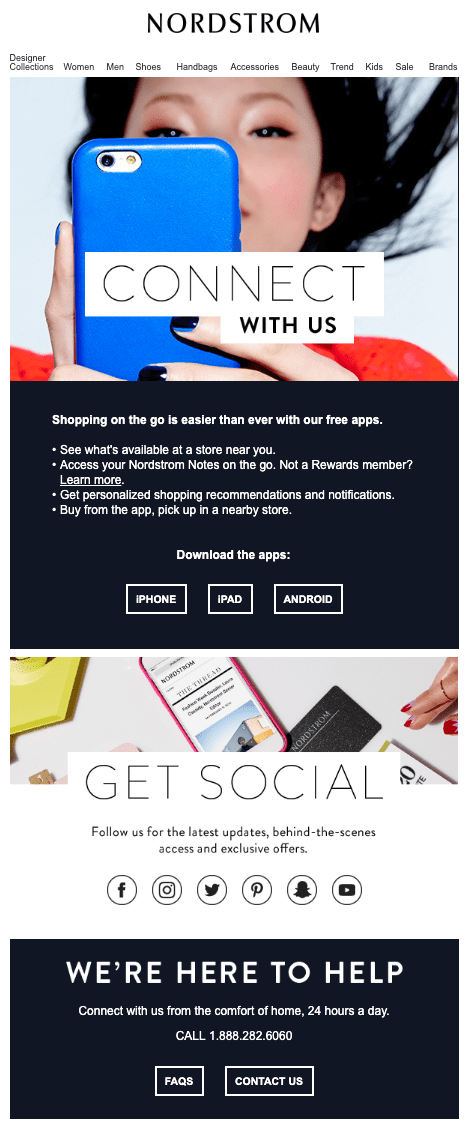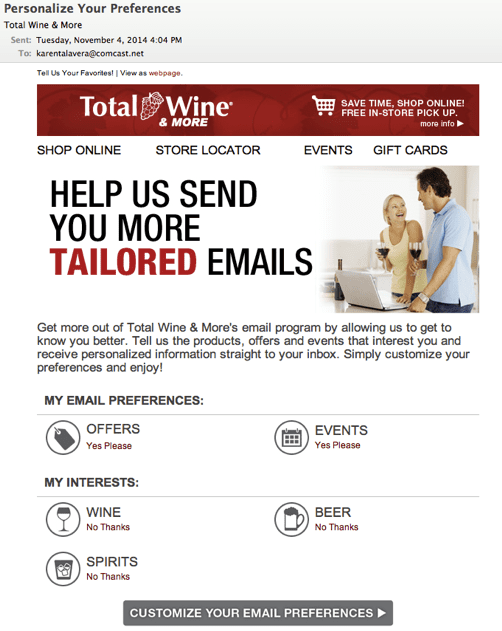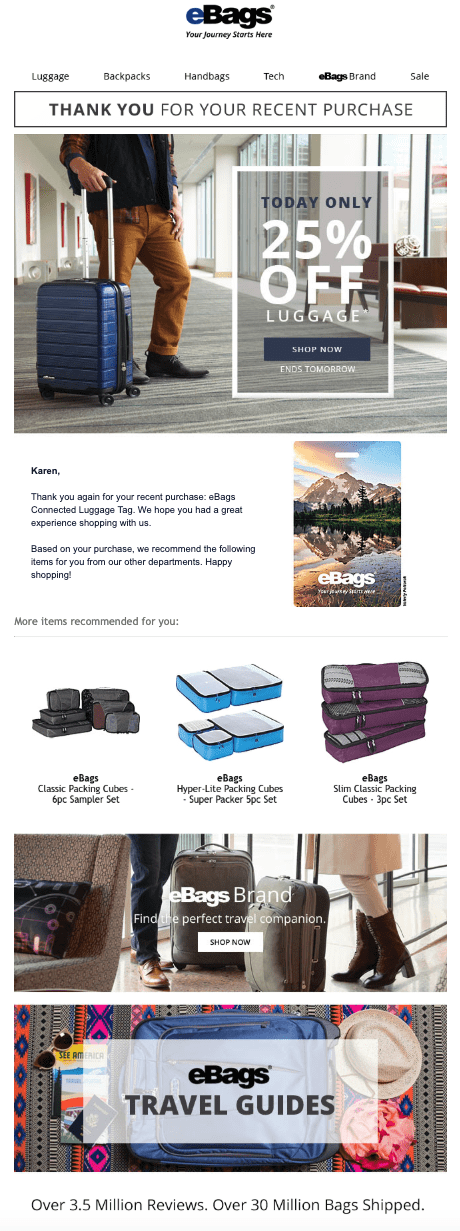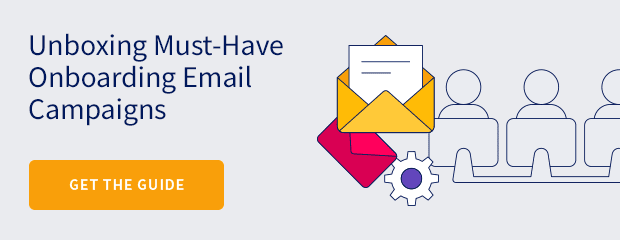In this ongoing series, we’ll be “unboxing” must-have email campaigns vital to any successful marketing program.
We started with Welcome Messages, so the next logical step is to focus on what comes next for new subscribers: Onboarding.
Don’t Assume You Have Them at Hello
Many brands send a welcome email to new subscribers or customers and stop there. But don’t assume you “have them” at hello! By not following your welcome campaign with an onboarding series, you’re missing a golden opportunity to solidify channel engagement, grow customer loyalty, and prompt first or repeat purchases.
Onboarding campaigns build on the strong foundation laid by your welcome campaign. In fact, brands which deploy a Welcome Series are essentially combining welcome and onboarding efforts into a single, multi-message campaign, and if this seamless transition from welcome to onboarding works for you, we highly endorse it.
Onboarding messages take the familiarity, appreciation, engagement and trust initiated in welcome messages to the next level, plus provide early response history and help you gather more data about your new subscribers. And as we know, the more data you have, the more personalized, customized and relevant your campaigns can be.
The verdict is in on the power of welcome and onboarding campaigns, which both fall under the category of triggered email made possible by marketing automation.
According to Internet Retailer, merchants that send a welcome series see 13% more revenue than those sending a single message. Automated emails get 53% more conversion than stand-alone, broadcast campaigns, and open rates for automated email are 95% higher than for traditional messages.
Just as your welcome campaign should have stated goals and be intentionally designed to accomplish them, each message of your onboarding campaign should have a specific objective. Every email in the series you design has a unique job to do.
Keep reading to understand the five essential ingredients of all onboarding campaigns. Want even more advanced tactics? Download our latest guide, Unboxing Must-Have Marketing Campaigns: Onboarding Series.
5 Essential Ingredients for Amazing Onboarding Campaigns
1. Orient Newcomers to Your Brand
Ask yourself this question: is it safe to assume a new email subscriber or customer knows her way around your brand? Your site? Your physical store? Probably not.
So, one of the first objectives of any good onboarding campaign is providing guidance and orientation to your world.
Just as you wouldn’t assume a first-time visitor to a shopping mall, airport, or country to know the landscape, you shouldn’t assume a new email subscriber knows yours. In fact, the broader your array of products and services, the wider the variety of benefits you offer, the more orientation your newcomers will need.
In those instances, longer onboarding series (5+ messages) are completely justifiable and useful because it takes at least that much messaging bandwidth to incrementally communicate a benefits roadmap in a way that’s clear and logical.
AARP is a perfect example of a brand that justifiably needs a longer onboarding series. The organization offers a broad and deep array of member benefits ranging from insurance to financial planning to travel to health and wellness, plus articles, videos and other content in each of these categories.
There’s no way they could possibly cover all that ground in a single welcome message, and they need to ensure new members understand the full breadth of benefits and take advantage of them.
That’s why their 6-message onboarding series (sent after a new member welcome email deploys) takes its time detailing member benefits and content category-by-category, even following-up nearly six months later with a final message to make sure subscribers get all they need.


AARP Onboarding Series
A brilliant move and a good reminder that if your onboarding series is longer and content-heavy like this, you’ll want a capstone message at the end to sum things up.
2. Build Cross-Channel Connections
Your onboarding series is your up-front chance to establish connections in other digital channels. You’ve welcomed your new member to email—now invite them to connect in related channels, especially social and mobile.
If you acquired your new subscriber through the web, invite them to download your mobile app if you have one. Whether they came to you through mobile or web, invite them to connect on social media.
The following example from Nordstrom is an excellent illustration of inviting both mobile app download and social network connections.


Nordstrom’s “Connect With Us” Cross-Channel Onboarding Email
In case you haven’t heard it before, a multi-channel customer is always worth more than a single-channel customer (cross-channel merchants have known this for years, which is why they still send catalogs despite having robust e-commerce sites and retail store footprints).
The same holds true online: an omni-connected subscriber, user or customer is more valuable than one limited to a single channel, because if you lose a connection in one channel, then it survives in the others.
3. Enable Behavioral Profiling
One of your onboarding campaign’s superpowers is delivering an early-stage look at subscriber response behavior and preferences. Because of the multi-message nature of an onboarding series, it provides multiple opportunities for recipients to open, click-on, and convert from email, which means you’ll rapidly get a look at the product/service/content categories each person is most interested in.
This, in turn, enables you to tailor future messages on a 1:1 basis, specifically to individual subscriber interests. It also enables automation so you can kick-off nurturing or drip series most closely aligned with their interests.
This practice is known as behavioral profiling—meaning you allow your email subscribers to show you through their open, click and conversion behavior what resonates with them. Use actual recipient behavior to guide your sending and targeting decisions as you go forward.
But, don’t limit behavior tracking to just email opens and clicks! Be sure to track behavior all the way through to web and/or mobile site visits and even offline transactions.
Take a look at the following message from women’s retail apparel brand Johnny Was (the second in their 3-part onboarding series). They offer four distinct product category areas to explore—Tops, Dresses, Jackets, and Bottoms—plus links for the catalog and for gifts.


Johnny Was Onboarding Email With Product Categories
They’re likely using this data to discern subscriber preferences and patterns, which ensures, for example, that the next time they have a sale on dresses they can selectively target those who clicked on dress pages or better yet, bought a dress.
4. Gather Self-Reported Data
While behavioral profiling provides inferred data—a helpful directional indicator—what’s even more powerful is voluntarily self-reported data subscribers offer up on their own.
If you allow data gathering through a subscriber preferences or customer profile center, make sure one of your onboarding steps invites new subscribers to tell you more about themselves and what they like.
Psychologically, this leads to a positive mirroring effect: you ask what someone wants, they tell you, you deliver according to their request, and they feel validated and rewarded which makes them more receptive and trusting to ongoing offers and invitations to engage.
See how Total Wine & More does it in the second message of their new email subscriber onboarding series below?


Total Wine & More “Personalize Your Preferences” Email
This is exactly what we as marketers want, so don’t miss the opportunity to proactively ask new subscribers to tell you their wants and needs right from the get-go.
5. Include a Bounceback/First Purchase Offer
Naturally, if you’ve already bought from a site like eBags, their new subscriber welcome and onboarding messages aren’t going to be aimed at getting you to make a first purchase (the common case when people sign up for email to get incentives or enter a sweepstakes, etc.), but they should capitalize on the chance to get you to make a follow-up purchase.


eBags Bounceback Offer
An onboarding series is the perfect opportunity to include either a bounceback or first purchase offer. If the new subscriber hasn’t bought yet, then make sure your final message (or a creative block present in the template for the entire series) includes an intro offer inviting the first purchase.
If the new subscriber did buy, give them an offer to “bounce back” and buy again, but make it really worth their while. An effective bounceback offer is always more lucrative than your typical customer acquisition offers and isn’t the type of deal or discount you’d use every day.
Advanced Approaches to Onboarding
Now that you know the five essential ingredients for an amazing onboarding series, you have a lot of decisions to make. The nature of your business should also inform what you include and your message cadence.
Go beyond the basics and download our full guide to learn more advanced onboarding email tactics and sequencing approaches to consider for your message cadence.
































